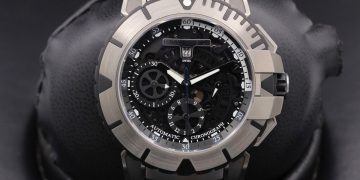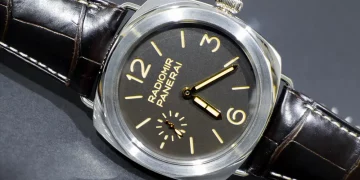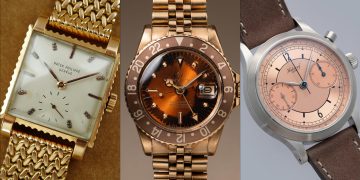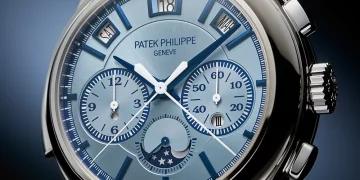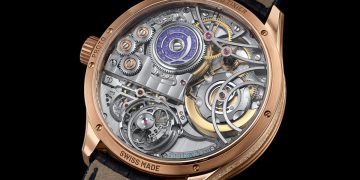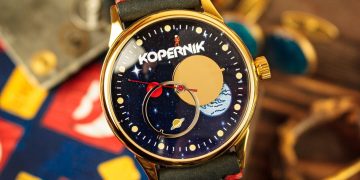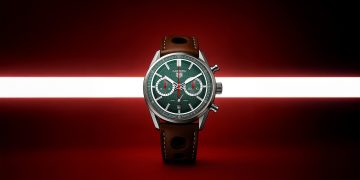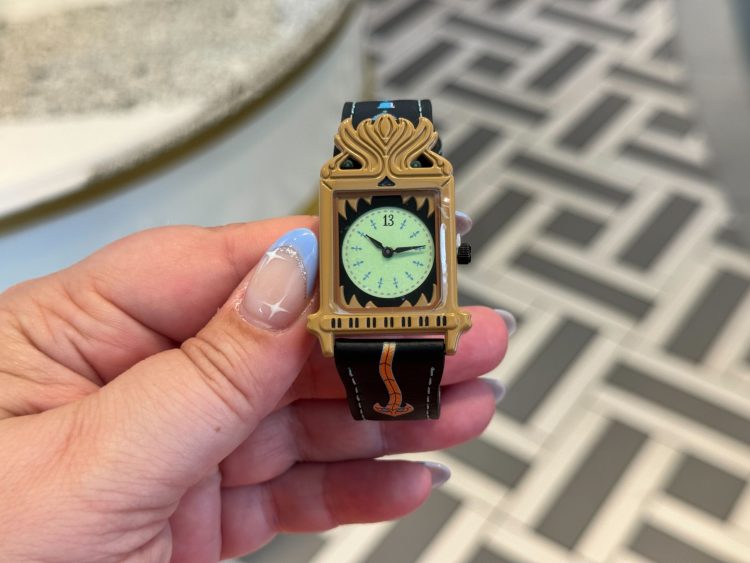In the world of horology, watches are often regarded as symbols of precision, craftsmanship, and heritage. Some watches are so intricately designed that they become revered treasures, passed down through generations or worn as statements of luxury and status. However, there are certain timepieces that carry more than just their timekeeping prowess—some are said to carry a darker, more ominous energy.
One such watch is often spoken of in whispers, a timepiece linked to numerous tales of misfortune, accidents, and even death. The legends surrounding it have spread like wildfire, but the truth remains elusive. Is this watch really cursed, or is it simply the result of superstition, coincidence, or the psychological power of belief?
In this article, we will explore the eerie tales that have followed a particular watch, dive into the lives of its owners, and discuss the psychological and cultural factors that contribute to the idea of cursed objects. Whether you believe in the paranormal or view it as a matter of chance, the story of this notorious watch reveals how mythology, human emotion, and the world of luxury collide in ways that transcend mere superstition.
The Watch at the Center of the Curse
The watch at the heart of this peculiar narrative is a rare, vintage model—a luxury timepiece from a prestigious brand, renowned not only for its craftsmanship but also for the strange occurrences that seem to surround it. Known as the “Phantom Timepiece” by those who whisper about its power, the watch was originally crafted in the mid-20th century, during a time of high innovation in the watchmaking industry. At first glance, it’s an elegant and refined model—sleek, with a polished gold case and an intricate mechanical movement that showcases the exceptional skill of its creators.
However, for those who have owned it, the story is not as simple as appreciating its fine engineering. Multiple owners have reported a disturbing series of events that unfolded after they acquired the watch. From financial ruin to tragic accidents, mysterious illnesses to unexpected deaths, the pattern of misfortune seems too frequent to dismiss as mere coincidence. The watch has earned a reputation as being cursed—an object that brings nothing but bad luck to those who dare to wear it.
The First Owner: A Cautionary Tale
The origins of the “Phantom Timepiece” curse trace back to its first known owner, a wealthy businessman named Charles Everleigh. Everleigh was a self-made millionaire in the early 1960s, and he bought the watch as a symbol of his success. The watch was initially a gift from a Swiss watchmaker to Everleigh after he closed a lucrative deal, cementing his reputation in the business world.
At first, the watch seemed to live up to its expected status as a symbol of affluence and good fortune. Everleigh wore it proudly, flaunting it at high-society events and business meetings. However, things took a dark turn shortly after he received the watch. Within months of wearing it, Everleigh’s company began to experience a series of financial setbacks. Despite his best efforts, investments started to fail, and he faced several lawsuits. Within a year, he lost his company, his fortune, and nearly all of his assets.
As Everleigh’s personal and professional life crumbled, he began to associate the downfall with the watch, which he had worn continuously since receiving it. Desperate to rid himself of the cursed object, he sold it at an auction, hoping to leave his misfortunes behind. But that was only the beginning of the watch’s troubled legacy.
The Watch’s Curse Takes Root
After Everleigh’s downfall, the watch changed hands several times, and with each new owner came a new chapter in its increasingly sinister story. Each person who owned the watch seemed to suffer some form of misfortune, whether it be financial ruin, health issues, or even death. The watch was rumored to be at the center of each tragedy, growing more infamous with each new account.
One particularly chilling incident involved a second owner, a young woman named Catherine Smythe. Catherine was a rising star in the fashion world, known for her elegance and ambition. She acquired the watch after it was sold at a charity auction, where it was presented as a rare and valuable collector’s piece. Catherine, intrigued by its history, wore the watch on her wrist to every event. However, shortly after doing so, she was involved in a car crash, leaving her with permanent injuries. She was forced to retire from her career, and her health steadily declined. Catherine, who had previously been in excellent health, underwent several surgeries in an attempt to recover but never regained her former vitality.
When she was asked about the watch, Catherine would only mutter that she felt it was the source of her bad luck. But when she tried to sell the watch, potential buyers seemed to steer clear, almost as if they could sense the cursed aura surrounding the timepiece. The watch had earned a reputation, and no one wanted to risk being its next victim.

Owners Who Swear It’s Haunted
As more and more people came into possession of the “Phantom Timepiece,” the rumors and stories continued to spread. In interviews with past owners, some revealed chilling details about their experiences with the watch. A few swore they felt an inexplicable weight while wearing it, an odd sensation that made them feel watched or followed. Some claimed that the watch would “stop” at certain times, only to mysteriously resume its ticking after a dramatic event in their lives occurred. Others reported hearing strange noises coming from the watch, even when it wasn’t being worn.
One particular owner, Richard Porter, a retired businessman, recalled how he felt a constant, growing sense of unease whenever he wore the watch. He claimed that it was almost as if the watch had a life of its own, subtly influencing his thoughts and actions. His family noticed his behavior change after he acquired the watch, becoming increasingly paranoid and withdrawn. Porter eventually admitted to believing that the watch was haunted, and, after suffering a series of personal misfortunes, he gave it away to a trusted friend, who immediately experienced a series of unsettling events shortly after receiving it.
Despite these reports, some owners dismiss the idea that the watch is cursed, attributing the misfortunes to bad luck or coincidence. They argue that superstitions surrounding luxury objects have always existed and that the human mind is prone to finding patterns, even where there are none. Skeptics point out that the “cursed” owners of the watch may have been predisposed to negative events in their lives, and that the watch is simply an object that has been unfairly tied to these occurrences.
The Psychology of Superstition: Why Do We Believe?
The idea of cursed objects is not unique to the “Phantom Timepiece.” Throughout history, certain items—ranging from jewelry to paintings to furniture—have been linked to bad luck or misfortune. Why do we believe in such things? Psychological research suggests that humans have a natural tendency to seek explanations for the unknown, especially in times of personal hardship or crisis. This desire to attribute events to something external often leads to the creation of superstitions.
In the case of the “Phantom Timepiece,” the watch’s luxurious origins, combined with its repeated association with misfortune, create a narrative that is deeply compelling. People who experience bad luck while owning the watch may be more likely to see it as the source of their troubles, reinforcing the idea of the curse.
Additionally, the human mind is highly suggestible. The belief in a cursed object can influence the way individuals perceive their own lives, making them more attuned to negative events or coincidences that fit the narrative. This phenomenon is known as the “confirmation bias,” where people selectively interpret events that align with their beliefs.
The Impact of the Curse: Cultural and Social Significance
The legend of the cursed watch reflects a broader cultural fascination with luxury items and their perceived power. Luxury goods have always carried an aura of mystique, and their allure is often amplified by the stories that surround them. In this case, the watch’s connection to bad luck and tragedy only adds to its mystique, making it even more desirable—and more feared.
The story of the “Phantom Timepiece” speaks to a deeper cultural fascination with fate, destiny, and the unknown. The idea that a simple object can carry so much power—both for good and for ill—appeals to our desire to understand the forces that shape our lives. Whether one believes in the curse or not, the watch has become a symbol of the intersection between luxury, superstition, and human psychology.
Conclusion: Fact or Fiction?
So, is the “Phantom Timepiece” really cursed, or is it simply a product of superstition and coincidence? The answer, as with many stories surrounding cursed objects, may never be clear. For some, the watch’s legacy of misfortune is undeniable, while others view it as a myth that has grown out of control over time. What remains certain is that the watch’s history has been shaped by the psychological power of belief, creating a legend that endures to this day.
Ultimately, the “Phantom Timepiece” serves as a fascinating study of how stories, myths, and superstitions can become intertwined with the objects we hold dear. Whether it’s cursed or simply unlucky, its tale remains one of the most captivating in the world of luxury watches.



